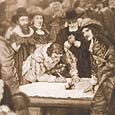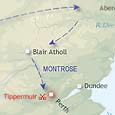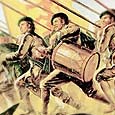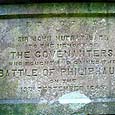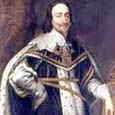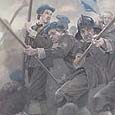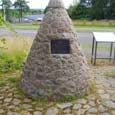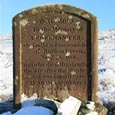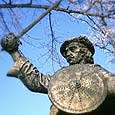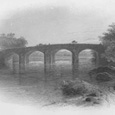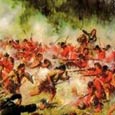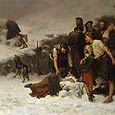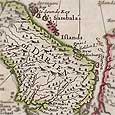Scotland’s Unification History
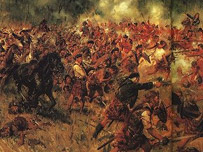
Scotland’s Unification
Mary’s legacy to Scotland was give birth to James VI who became James I of England and so unified Scotland and England at last. However the religious split across the newly unified nation did not go away. The covenanters emerged and were persecuted for their beliefs, Britain was thrown into a bloody civil war which resulted in the protectorate of Cromwell.
The Crown was soon restored but the troubles did not end there. the Stewart right to the throne was challenged and won by William of Orange. Scotland suffered a double blow after this; firstly in our darkest moment as the MacDonalds of Glencoe (above) were famously massacred and secondly in the ill fated Darien scheme. This failed venture to establish a trading colony in the new world all but bankrupted Scotland and lead indirectly to the Act of Union and the end of Scottish independence.
1603 – The Union Of The Crowns
The son of Mary, Queen of Scots, and Lord Darnley became King of Scotland upon his mother’s forced abdication in 1567.
» Continue to read about the Union Of The Crowns in 1603
1638 – The Second Covenant
Charles I’s views of himself, theology and politics became increasingly contradictory to the beliefs of the Presbyterians. Charles tried to bring together the laws and churches of Scotland and England, with all roads leading to himself.
» Continue to read about the Second Covenant
1644 – Campaign of the Marquis of Montrose
James Graham, 5th Earl and later 1st Marquis of Montrose, was born in 1612 and studied at St Andrew’s University. In 1638 he contributed to the National Covenant, and fought for the Covenant in the Bishops’ Wars.
» Continue to read about the campaign of the Marquis of Montrose
1644 – Battle of Tippermuir
In the August of 1644 James Graham, 1st Marquis of Montrose, combined his force of cavalry and Highland foot soldiers with Alasdair MacDonald’s Irish soldiers to begin a campaign against the Covenanters for Charles I.
» Continue to read about the 1644 Battle of Tippermuir
1645 – Battle of Aldearn
Under James Graham, the Marquis of Montrose, the Royalist army had achieved success at Inverlochy and Dundee. He made camp with his 1750 men and 250 horses at Auldearn, around three miles to the east of Nairn.
» Continue to read about the 1645 Battle of Aldearn
1645 – Battle of Philiphaugh
The Marquis of Montrose had contributed to the 1638 Covenant and had served with his opponent of this day General sir David Leslie in the Covenanter’s army. However sickened by some of the extremist actions of the Covenanters he had switched to the Royalists.
» Continue to read about the 1645 Battle of Philiphaugh
1646 – Charles I Surrenders to the Scots
Civil War had begun in earnest by 1642. Charles I was the enemy of the Presbyterians in Scotland and the parliamentarians in England. His lack of ability at negotiation and conciliation had compounded his situation.
» Continue to read about Charles I’s surrender to the Scots
1650 – Battle of Dunbar
The Calvinists were in support of Charles II when he became King and signed both the Covenants in 1649. Cromwell, however, was not. With sixteen thousand men he invaded Scotland in July and headed for Edinburgh, expecting to rendezvous with his supply ships at Leith. David Leslie and the Scots army did not let him.
» Continue to read about the 1650 Battle of Dunbar
1651 – Battle of Inverkeithing
The execution of King Charles I changed the whole course of the Civil war. The Scots recognized his successor. Cromwell pushed North destroying Leslie’s army on the 3rd of September 1650. The Scots still had hold of Scotland north of the forth.
» Continue to read about the 1651 Battle of Inverkeithing
1666 – Pentland Rising
The covenanting ministers who rejected the Restoration settlement with Charles II’s additions, found themselves replaced by curates and without a living.
» Continue to read about the 1666 Pentland Rising
1671 – Rob Roy MacGregor Born
Born in 1671 at Loch Katrine, the third son of a Lieutenant-Colonel, MacGregor’s inherited long arms and great strength gave him abilities with the broadsword that made his name known to many. He fought at Killiecrankie for Viscount Dundee in 1689 before joining the Lennox Watch.
» Continue to read about Rob Roy MacGregor’s birth
1679 – Battle of Bothwell Bridge
Following success against the military at the recent Battle of Drumclog, the Conventiclers’ support had swollen to six thousand when they came together at Hamilton in June 1679.
» Continue to read about the 1679 Battle of Bothwell Bridge
1689 – Battle of Killiecrankie
News came to Jacobite leader Viscount Dundee, John Graham of Claverhouse, that General Hugh MacKay would be moving his men from Stirling to Blair Castle. Dundee, known by his supporters as Bonnie Dundee and by the Covenanters as Bloody Clavers, took his twenty five hundred Highlanders over the Drumochter Pass near Blair on 26 July 1689.
» Continue to read about the 1689 Battle of Killiecrankie
1689 – William of Orange Crowned
James had converted from Protestantism to Catholicism in 1668 whilst his brother Charles II was monarch. When the King too converted and tried to re-install Catholicism among his subjects around 1672, there was outrage. Acts were passed in Parliament, such as the Test Act, so only Anglicans could hold positions of office.
» Continue to read about the crowning of William of Orange
1692 – Massacre of Glencoe
While the other MacDonald clans suffered through the 1500s, the MacDonalds of Glencoe survived notably well. Perhaps their greatest protection was their home environment acting like a natural fortress. They certainly never found the need to build one.
» Continue to read about the Massacre of Glencoe
1698 – Darien Venture
For twenty years the London East India Company had enjoyed soaring success, bringing incredible fortunes to its stockholders through its virtual monopoly of Eastern trade. By 1695 competitors in the market were using every scandalous technique to have Bills in their favour passed in England’s Parliament, and in return were being undermined by the EIC happily operating at the same low levels to retain dominance and political favouritism.
» Continue to read about the Darien Venture
1707 – The Act of Union
The Highland Dress Proscription Act of 1746, designed to punish the clans and destroy their identities and economic stuctures, was repealed in 1782 after thirty six years in law.
» Continue to read about the Act of Union







